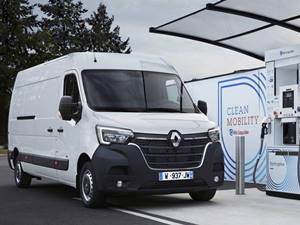ow to produce sustainable hydrogen from biogas
Roman Frey News

There are several ways to produce hydrogen, including from renewable energy. One of the most effective and viable from an economic and environmental point of view is the use of methane from biogas, which in turn allows the carbon to solidify in the form of products such as graphite.
The Hazer Process is an innovative technology that converts bio-methane to renewable hydrogen and graphite using an iron ore catalyst, creating an alternate hydrogen pathway to the traditional approaches of steam methane reforming and electrolysis.
Hazer will sell the renewable hydrogen for industrial applications and is exploring markets for graphite including carbon black, activated carbon and battery anode applications. Hazer aims to take advantage of waste or low value biogas streams such as from wastewater treatment plants, landfill sites and other industrial locations to produce higher value hydrogen and graphite.
“Renewable hydrogen is typically produced by splitting water molecules using renewable electricity. However, Hazer’s process represents an alternative way to produce hydrogen using biogas sourced from wastewater treatment plants. If successful, this project will offer opportunities to replicate the technology across other treatment plants and landfill sites across the World,”
With a potential of 100,000 kg of hydrogen produced in a single wastewater treatment plant, the total could reach 4 billion kg of hydrogen in the United States alone

This amount of hydrogen could be equivalent to the annual supply of hydrogen for 2.5 million fuel cell vehicles, based on current consumption.
Other projects such as Bionico in the European Union, or Symbio from Shell Energy are reaching the same conclusion, indicating that it is a tangible reality that we can use the hydrogen produced in water or waste treatment plants while avoiding the emission of methane into the atmosphere.

There are several ways to produce hydrogen, including from renewable energy. One of the most effective and viable from an economic and environmental point of view is the use of methane from biogas, which in turn allows the carbon to solidify in the form of products such as graphite.
The Hazer Process is an innovative technology that converts bio-methane to renewable hydrogen and graphite using an iron ore catalyst, creating an alternate hydrogen pathway to the traditional approaches of steam methane reforming and electrolysis.
Hazer will sell the renewable hydrogen for industrial applications and is exploring markets for graphite including carbon black, activated carbon and battery anode applications. Hazer aims to take advantage of waste or low value biogas streams such as from wastewater treatment plants, landfill sites and other industrial locations to produce higher value hydrogen and graphite.
“Renewable hydrogen is typically produced by splitting water molecules using renewable electricity. However, Hazer’s process represents an alternative way to produce hydrogen using biogas sourced from wastewater treatment plants. If successful, this project will offer opportunities to replicate the technology across other treatment plants and landfill sites across the World,”
With a potential of 100,000 kg of hydrogen produced in a single wastewater treatment plant, the total could reach 4 billion kg of hydrogen in the United States alone

This amount of hydrogen could be equivalent to the annual supply of hydrogen for 2.5 million fuel cell vehicles, based on current consumption.
Other projects such as Bionico in the European Union, or Symbio from Shell Energy are reaching the same conclusion, indicating that it is a tangible reality that we can use the hydrogen produced in water or waste treatment plants while avoiding the emission of methane into the atmosphere.
































